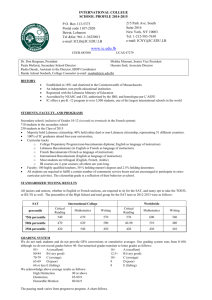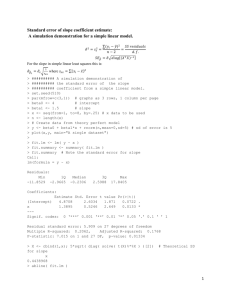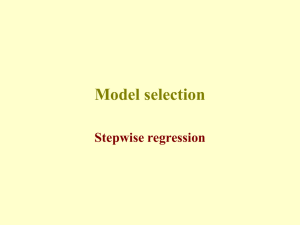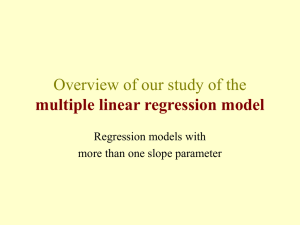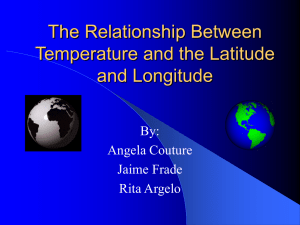Document
advertisement
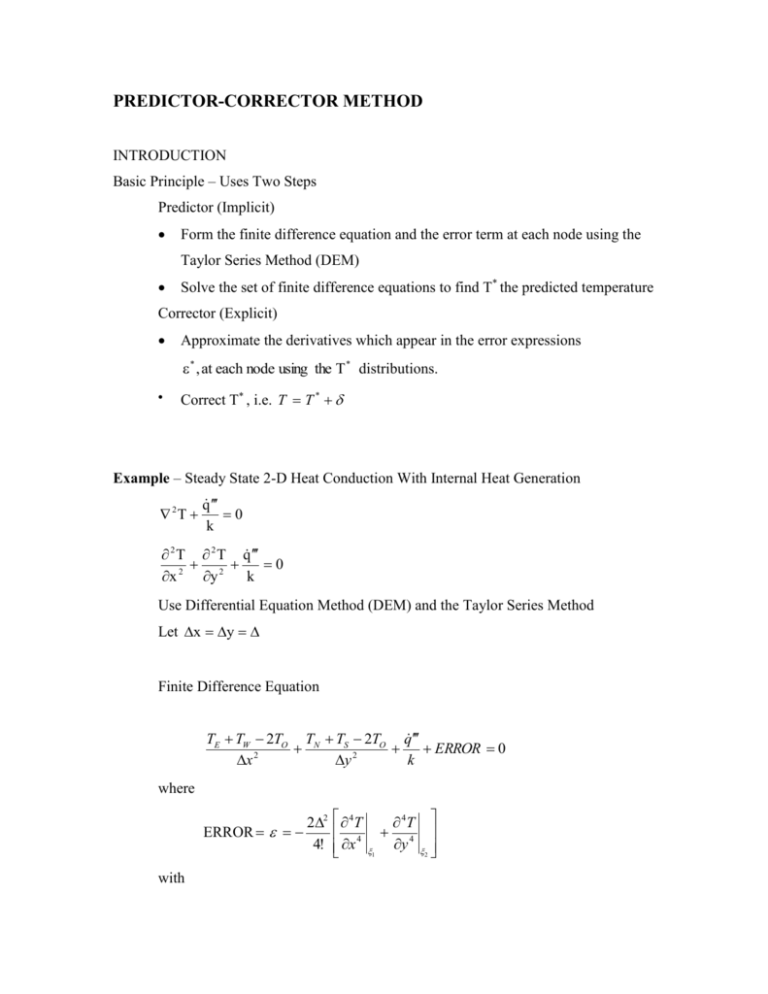
PREDICTOR-CORRECTOR METHOD INTRODUCTION Basic Principle – Uses Two Steps Predictor (Implicit) Form the finite difference equation and the error term at each node using the Taylor Series Method (DEM) Solve the set of finite difference equations to find T* the predicted temperature Corrector (Explicit) Approximate the derivatives which appear in the error expressions * , at each node using the T * distributions. Correct T* , i.e. T T * Example – Steady State 2-D Heat Conduction With Internal Heat Generation 2T q 0 k 2 T 2 T q 0 k x 2 y 2 Use Differential Equation Method (DEM) and the Taylor Series Method Let x y Finite Difference Equation TE TW 2TO TN TS 2TO q ERROR 0 x 2 y 2 k where ERROR with 22 4T 4! x 4 1 4T y 4 2 x w 1 x E yS 2 y N Predictor step For this step assume =0 and solve the set of finite difference equations to obtain values of T * ' s. The equation solved for interior points is: TE * TW * 4TO TN * TS * * q 2 k Corrector step Determine the approximation for 4T x 4 4T y 4 and O O How do we find an approximation for the derivatives at O? Use Taylor Series expansions. How many expansions do we need? Introduce weighting coefficients to find out. What conditions do we use to evaluate the weighting coefficients? For the grid shown, is any special treatment needed near the boundaries? Interior node WW W O E EE Approximation for 4T x 4 O Weighting Coefficients Taylor Series Expansions T x O 2 2 T 2 x 2 O 3 3 T 3! x 3 O 4 4 T 4! x 4 O TEE TO 2 ( 2 ) 2 2! ( 2 ) 3 3! ( 2 ) 4 4! [C] TW TO 2 2! 3 3! 4 4! [D] TWW TO 2 ( 2 ) 2 2! ( 2 ) 2 3! ( 2 ) 4 4! [A] TE TO [B] After summing the above equations requirements on coefficients of derivatives are: T [COEF] x 0 A 2B C 2D O A 2B C 2D 0 [COEF] 2T 2 (2) 2 2 (2) 2 0 A B C D 2 2 2 2 x 2 O A 4B C 4D 0 [COEF] 3T 3 (2) 3 3 (2) 3 0 A B C D 3! 3! 3! 3! x 3 O A 8B C 8D 0 [COEF] 4T 4 ( 2 ) 4 4 ( 2 ) 4 1 A B C D 4! 4! 4! 4! x 4 O A 16B C 16D 4! 4 Solution of this simultaneous set of equations is: AC 4 1 , BD 4 4 Approximation becomes TEE * 4TE * 6TO * 4TW * TWW * 4T O(2 ) x 4 O 4 Error based upon predictor temperatures is: * 22 1 (TEE * 4TE * 6TO * 4TW * TWW * ) (4!) 4 (TSS * 4TS * 6TO * 4TN * TN * ) At near wall nodes W O E EE EEE 4T What is the appropriate expression for ? x 4 O Weighting Coefficients [A] Taylor Series Expansions TW TO T 2 2 T 3 3 T 4 4 T x O 2! x 2 O 3! x 3 O 4! x 4 O [B] TE TO [C] TEE TO 2 [D] TEEE TO 3 2 2! ( 2 ) 2 2 (3) 2 2 3 3! ( 2 ) 3 3! (3) 3 3! 4 4! ( 2 ) 4 4! (3) 4 4! Requirements T [COEF] x 0 A B 2C 3D O A B 2C 3D 0 2T 2 2 (2) 2 (3) 2 0 A B C D 2! 2! 2! 2! x 2 O A B 4C 9D 0 [COEF] 3T 3 3 ( 2 ) 3 (3) 3 [COEF] x 3 0 A 3! B 3! C 3! D 3! O A B 8C 27D 0 4T 4 4 (2) 4 (3) 4 1 A B C D 4! 4! 4! 4! x 4 O 4! A B 16C 81D 4 [COEF] Simultaneous solution of the set of equations A 1 , 4 B 6 4 , C 4 , 4 D So TW * 4TO * 6TE * 4TEE * TEEE * 4T O() x 4 O 4 The error term is: 1 4 22 1 * * * * * ( T 4 T 6 T 4 T T ) W O E EE EEE (4!) 4 * (TSS * 4TS * 6TO * 4TN * TN * ) To generate the corrected solution, we now introduce the error terms into the equation and solve. TE TW 4TO TN TS q 2 * 4 4k Here we are solving a linear system with the same coefficient matrix used for the predictor step, but with a modified right hand side. With the right choice of solution method (e.g. LU decomposition), this can be substantially less time consuming than the original predictor solution. If A is the coefficient matrix then the correction equation can be written as: T T * T * A1 * Here I've added arrows over symbols to emphasize that we are dealing with the vectors of all mesh point temperatures and vector of all mesh point errors.

